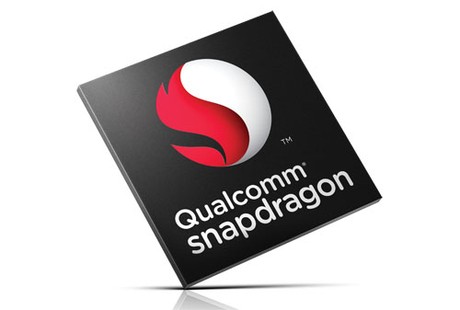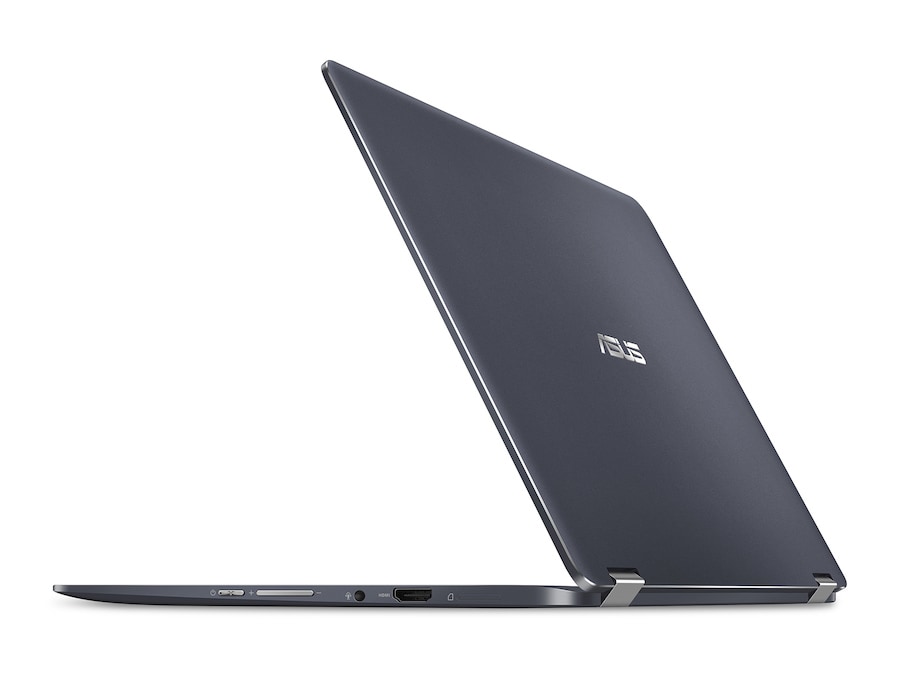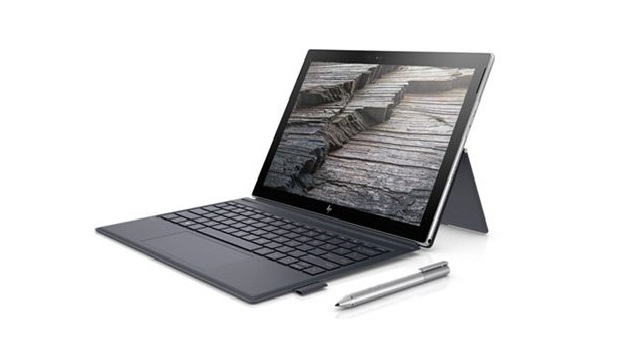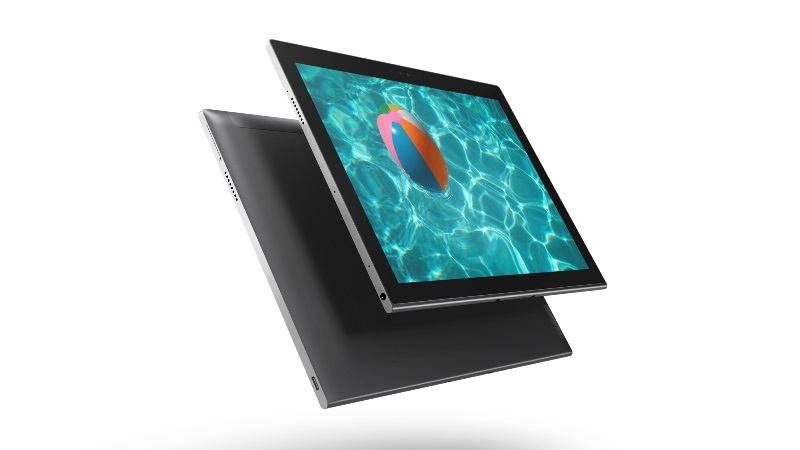Asus, HP Debut Snapdragon-Powered Windows Laptops (Update: Also Lenovo, And They're Coming)
Update, 2/22/2018, 12:05pm PT: Qualcomm and Microsoft announced that the Asus NovaGo, HP Envy x2, and Lenovo Miix 630 will start to debut at online stores. The companies also revealed that in the U.S. these always connected PCs will function on T-Mobile, AT&T, Verizon, and Sprint's wireless networks. We've updated this post with available specs, too, although some info still isn't available.
Original story, 12/5/2017, 1:25pm PT:
Qualcomm and its partners debuted the world’s first Snapdragon-powered Windows laptops from its 2nd annual Snapdragon Technology Summit from Maui, Hawaii.
Qualcomm set its sights on the Windows market late last year when it announced that its Snapdragon 835 SoC processor would find its way into Asus, HP, and Lenovo Windows 10 devices featuring “Always On” connectivity. We’ve already detailed the finer points and pitfalls of Qualcomm’s ambition, but now we can see if the company can make it stick with a new pair of devices from Asus and HP.
Asus NovaGo
Asus CEO Jerry Shen was on hand to reveal the Asus NovaGo, an ultra-thin and light convertible laptop powered by a Qualcomm Snapdragon 835 with 8GB of memory and 256GB of Universal Flash Storage 2.0 (UFS 2.0), which is capable of speeds up to 1,400Mbps. The device runs Windows 10 S and achieves Always On connectivity with a Snapdragon X16 Gigabit LTE modem (capable of up to 1Gbps download speeds) and dual-band 802.11ac WiFi with MU-MIMO technology.
The NovaGo features a 13.3” 1920 x 1080 10-point multitouch display that sports a 178-degree viewing angle, 100% sRGB color gamut, and an ultra-thin 8.9mm bezel. The 360-degree hinge allows you to use the device any way you like (as a laptop, tablet, or in “tent” mode), and Asus Pen support can give creatives the ability to draw on the screen the same as they would on paper or canvas.
USB connectivity is limited to two USB 3.1 (Gen 1) Type-A ports, but you can connect to an external display via an HDMI port. Asus also claimed the NovaGo has up to a 22-hour battery life (in use) and over 30 days of modern standby.
Get Tom's Hardware's best news and in-depth reviews, straight to your inbox.
HP Envy x2
Similar to the NovaGo, HP’s Envy x2 is a thin and light Windows 10 S laptop aimed at creatives, and it also features a Qualcomm Snapdragon 835 SoC, up to 8GB of LPDDR4 PoP memory, and up to 256GB of storage. Always On is also onboard with a Snapdragon X16 LTE modem that supports 4G LTE-Advanced signals.
The HP Envy x2 is more akin to a Microsoft Surface, with the ability to be used as a tablet, placed upright with a hinged stand on the back of the device, or connected to a keyboard mat. The 12.3” WUXGA touchscreen display features Corning Gorilla Glass 4 for increased durability and scratch resistance, and it is also compatible with an active pen. HP claimed the device achieves up to 20 hours of battery life, and up to 700 hours in Connected Modern Standby mode.
Qualcomm promised higher battery life when it announced the endeavor to create Always On Windows devices with its Snapdragon 835 SoC, and if Asus and HP’s claims are true, these devices certainly appear to deliver on that promise.
Pricing And Availability
There’s no word yet on the pricing or availability for the Asus NovaGo, but HP said that the Envy x2 would be arriving in the UK in February, starting at £999 with a keyboard and active pen included.
Derek Forrest was a contributing freelance writer for Tom's Hardware. He covered hardware news and reviews, focusing on gaming desktops and laptops.
-
oneblackened This is a pretty big deal. This is the first inroads for ARM into what has for decades been x86 space, and could potentially open it to companies like Apple building their own ARM or other RISC chips for their computers.Reply -
sykozis Reply20452224 said:This is a pretty big deal. This is the first inroads for ARM into what has for decades been x86 space, and could potentially open it to companies like Apple building their own ARM or other RISC chips for their computers.
It all depends on pricing. If people can get an x86 laptop for $300 - 400....why shell out the extra money on a laptop with a Qualcomm processor? They have to be priced to compete. -
JQB45 To me if you exclude the high-end ARM CPU these are high-end devices.Reply
1. High Resolution Touch Screen
2. Ultra Thin Laptop / 2-n-1
3. 20+ Hour Battery Life
4. Cellphone Modem
5. Corning Gorilla Glass
If you want an example of poor quality look at the latest HP Envy.
https://techreport.com/news/32920/report-hp-envy-x360-battery-life-drags-regardless-of-cpu-vendor
1. Poor Battery Life
2. Immature firmware and drivers
3. Different Hardware (Display, fit and finish) between AMD and Intel offerings making it impossible to compare.
4. Sub-Par color gamut coverage
5. The list goes on... -
therealduckofdeath @colgeek, I really hope you're forwarding the content of the complaints about the way the log in systems "works" when you remove the complaints?Reply -
catalina.ling Can it run x86 and x64 software via emulation? How is the speed compared to i7-8550U say? Reason I choose i7-8550U because to command that price range, it needs to be damn close to the performance of the similarly priced product. Otherwise, why should consumer pay more and limit themselves to small eco system of Arm based software or spent the money to run the software through emulation at a quarter of the speed that they would get from a native x86/x64 software?Reply -
cryoburner Reply
These ARM devices also run Windows 10 S. As described by Wikipedia...20452684 said:To me if you exclude the high-end ARM CPU these are high-end devices.
Windows 10 S is a feature-limited edition of Windows 10 designed primarily for low-end devices in the education market. It has a faster initial setup and login process, and allows devices to be provisioned using a USB drive with the "Set Up School PCs" app. Windows 10 S only allows the installation of software (both Universal Windows Platform and Windows API apps) from Windows Store, although command line programs or shells (even from Windows Store) are not allowed. System settings are locked to only allow Microsoft Edge as the default web browser with Bing as its search engine. The operating system may be upgraded to Windows 10 Pro for a fee, to enable unrestricted software installation. Microsoft also provides means of downgrading back to the S edition. All Windows 10 S devices will include a free one-year subscription to Minecraft: Education Edition. Critics have compared the edition to Windows RT, and have considered it to be a competitor to Chrome OS.
It doesn't entirely sound like an operating system intended for a high-end device. I suppose it could be considered a new version of Windows RT, which is what the original Microsoft Surface devices used, only now with some much needed x86 emulation. The Surface might be considered as being like a high-end netbook or tablet, but compared to a full laptop it could be difficult to consider it high-end.
When this was announced a year ago, Microsoft said that Windows 10 on ARM processors would only be able to emulate 32-bit x86 software, in addition to running Windows 10 apps from the Windows Store. So, apparently 64 bit emulation won't be an option. Most software is still 32-bit though, and aside from applications that benefit from having access to lots of memory, not much tends to be gained from 64-bit versions of software. But there is certainly the question of how well the emulation will perform. In a video, they described the emulation technology as being "magical", which I am interpreting to mean "not very good." : P20454257 said:Can it run x86 and x64 software via emulation? How is the speed compared to i7-8550U say? Reason I choose i7-8550U because to command that price range, it needs to be damn close to the performance of the similarly priced product. Otherwise, why should consumer pay more and limit themselves to small eco system of Arm based software or spent the money to run the software through emulation at a quarter of the speed that they would get from a native x86/x64 software?
-
mlee 2500 To be fair, your average Tom's Hardware reader with their i7 CPU's and Discrete Graphics Cards are hardly the targeted audience or market for Windows on ARM.Reply
It looks to me like they are trying to bring a lightweight, always connected, and very long battery life laptop to students and professionals who mostly use browsers and common office apps. Might be especially attractive to folks who, when doing MORE then that, commonly then switch to a VM in the cloud or datacenter.
But yeah, if there are any compromises WITHIN those parameters, then this will likely go the way of Windows RT. -
Jay_29 I don’t get it, Snapdragon 835 performance is mediocre, what justifies the $1000 price tag?Reply





